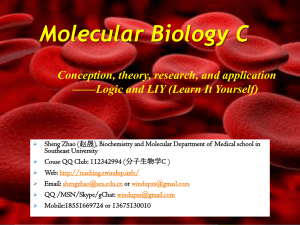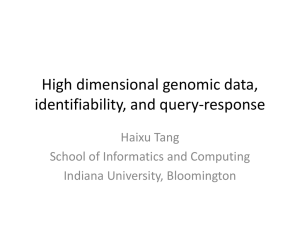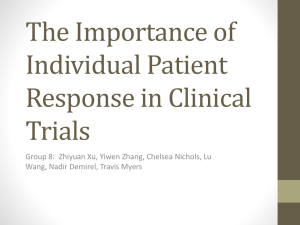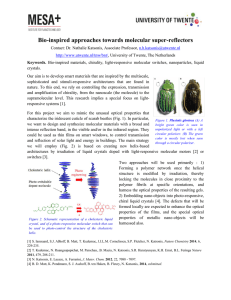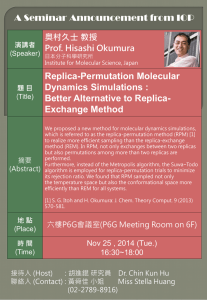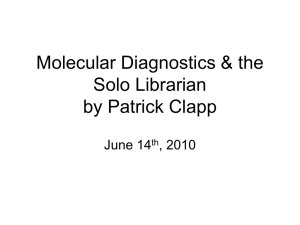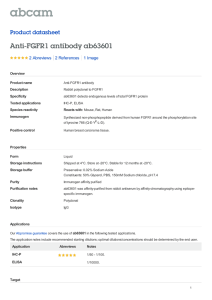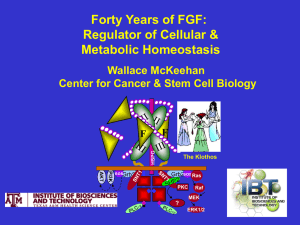From precision medicine to stratified medicine: current
advertisement
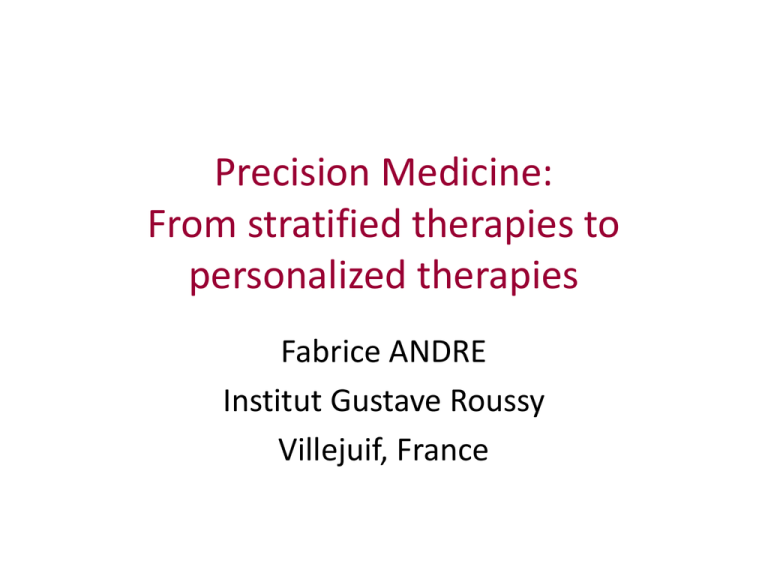
Precision Medicine: From stratified therapies to personalized therapies Fabrice ANDRE Institut Gustave Roussy Villejuif, France Frequent cancers include high number of very rare genomic segments (whole genome sequencing breast cancers) Stephens, Nature, 2012 Working hypothesis • Targeting mechanisms that lead to cancer progression can improve patient’s outcome • These mechanisms are individual • Goal: to identify the mechanism of cancer progression at the individual level, in order to target it Precision Medicine Concept: Identify the targets to be treated in each patient Clinical evidence What is the optimal Biotechnology ? Therapy matched to genomic alteration Molecular analysis What is the optimal Algorithm ? Target identification Andre, ESMO, 2012 Outline • Stratified medicine • Personalized medicine Stratified medicine • Drug development or implementation in a strate defined by a molecular alteration FGFR1 amplification: 10% of breast cancer Translational research to feed stratified medicine FGFR1: amplification in 10% BC FGFR1 inhibitors present higher sensitivity on FGFR1-amplified CC Set-up genomic test (FISH) Run phase II trial Testing the FGFR1 Inh in patients with FGFR1 amp BC Research and medical questions related to stratified medicine • How to facilitate translation of discoveries ? • Develop translational research units • How to set-up a molecular assay for stratified medicine ? • Develop genomic units for clinical use • How to optimally run trials of stratified medicine ? • Set-up molecular screening programs Molecular screening programs: to identify patients eligible for phase I/II trials Trial A Molecular screening with High Throughput Genomics Trial B Target identification IF Progressive disease Trial C Trial D Trial E Trial F Andre, Delaloge, Soria, J Clin Oncol, 2011 Ongoing molecular screening or personalized medicine programs in France Sponsor Pilot study Unicancer Gustave Roussy L Berard Lyon Curie Institute 1st generation trials No NGS NGS SAFIR02 breast SAFIR02 lung SAFIR01 preSAFIR (Arnedos, EJC, 2012) Randomized trials MOSCATO (Hollebecque, WINTHER Unified Database: Pick-up the winner targets ASCO 2013) Profiler MOST SHIVA (Letourneau AACR 2013) 2nd generation Algorithm for Personnalized medicine Overall : >2 000 planned patients (all tumor types), >800 already included Breast Cancer: > 1 000 planned, >70 already treated Goal: To generate optimal algorithm for individualized therapy Molecular screening: Challenges • No research in stratified medicine without molecular screening programs Evolution: GENOMIC DISEASES ARE BECOMING TO RARE OR COMPLEX TO ALLOW DRUG DEVELOPMENT IN GENOMIC SEGMENTS Are we going to make a drug development for this AKT1 mut / FGFR1 amp segment ? How to move forward ? Stephens, Nature, 2012 Solution to improve outcome with targeted therapies in the genomic era: test the algorithm not the drug How to move there ??? SAFIR02: Study Design 10 Targeted therapy According to 51 Molecular alterations Biopsy metastatic site: Next generation sequencing Array CGH R Target defined by 1st generation Virtual cell (CCLE) Her2-negative metastatic breast cancer no more than 1 line metastatic NSCLC no chemotherapy more than 1 line chemotherapy EGFRwt / ALKwt Chemotherapy 6-8 cycles SOC No PD No alteration Followed up but not included Ongoing molecular screening or personalized medicine programs in France Sponsor Pilot study Unicancer Gustave Roussy L Berard Lyon Curie Institute 1st generation trials No NGS NGS SAFIR02 breast SAFIR02 lung SAFIR01 preSAFIR (Arnedos, EJC, 2012) Randomized trials MOSCATO (Hollebecque, WINTHER Unified Database: Pick-up the winner targets ASCO 2013) Profiler MOST SHIVA (Letourneau AACR 2013) 2nd generation Algorithm for Personnalized medicine Overall : >2 000 planned patients (all tumor types), >800 already included Breast Cancer: > 1 000 planned, >70 already treated Goal: To generate optimal algorithm for individualized therapy Long term perspective 2018-2020 2013 1st generation trials Targeting oncogenic drivers 2015 database 2nd generation algorithm Integration of other systems: DNA repair Immunology metabolism 2nd generation trials database Challenges / Research questions • Bioinformatic algorithm for treatment decision, that integrates all biological systems • Technologies: – whole exome sequencing – RNA seq – Protein-based assays Conclusion: genomic medicine for cancer patients • bioinformatic algorithm for treatment decision • Integration of DNA repair, immunology, metabolism in personalized medicine • large scale screening and implementation new technologies • Target identification for stratified medicine • understanding mechanisms of resistance


